By Bill Bartholomew
Talk Host/Podcaster/Journalist/Musician
 Folks in the Gen Z and millennial demographics are heavily engaged in political issues, care about news in their communities and the world, and are constantly bombarded with content. So why are they less likely to tune into and interact with news/talk radio than older demographics?
Folks in the Gen Z and millennial demographics are heavily engaged in political issues, care about news in their communities and the world, and are constantly bombarded with content. So why are they less likely to tune into and interact with news/talk radio than older demographics?
Talk radio has historically skewed older, and from an ad portfolio standpoint, is often targeted at the coveted 35-54 and 55+ demographics. However, in a world where social media influencers and podcasters supply information to millions of young consumers, news/talk radio should be able to effectively compete for the ears of younger generations in a comparable, if not expanded way.
For all of the anecdotal and hard evidence that terrestrial radio may be trending in a downward direction, the format continues to have a vast reach. It is convenient to engage with it in automobiles, and occasionally in home or office settings. Yet, while younger generations listen to radio, news/talk is not the format that they turn to by and large.
Unlike many digital-first content producers, radio retains a unique quality: authority. By virtue of editorial standards, FCC regulation and brand – things that social media and podcasts often lack – radio has the unique ability to deliver credible, vetted, nuanced and universally trustworthy content that can instantaneously adapt to meet the needs of the moment. This is true in everything from natural disasters to rapidly evolving breaking news stories, providing a channel for immediate, reactionary insight and analysis.
There are several steps that news/talk radio should pursue in earnest to adapt to the current climate of content consumption, particularly by younger listeners, that can reach, and most importantly, retain broader, younger, more diverse and more engaged audiences.
- Introduce younger people into the conversation.
Too often, Gen Z and millennials are skewered by older hosts, mocked for their perceived naivety, unchecked optimism and me-first approach. While some of these qualities can be accurate, that approach reflects a disconnect between older generations and the experience of younger ones. Millennials and Gen Z have grown up in a post-9/11 world replete with “endless wars”, the fallout from the 2008 financial crisis, runaway student debt, a massive housing crisis, the mental health stressors of social media, Covid19’s impact on traditional youth experiences, climate change, a deeply bifurcated political environment and a constantly evolving quest for social justice. Through these experiences, younger generations offer an important perspective that should be assigned the same news value as experts from older generations.
Are you discussing shifts towards electric vehicles? Bring on someone from Gen Z to share their perspective on why steps towards carbon neutrality are important to them. Engaging a conversation on the president’s approval rating? Perhaps younger conservative and leftist voices should be included in the conversation. Discussing immigration? How about the perspective of a younger member of a Latino organization?
By giving younger generations and more diverse guests a platform, stations can simultaneously expand their content and reach. With consistency, the station’s brand will become more familiar to younger potential listeners who may be inclined to tune in to hear someone who shares their identity and perspective on – here’s that word again – a platform of authority. Let the guest do the work of establishing the credibility and importance of your station or talk show to younger audiences by posting about their appearance on social media, sharing audio clips and mentioning to their peers. It will build familiarity and trust among those generations, who in turn, will begin to tune in on a more regular basis.
Stations should also consider bringing more younger, competent voices into on-air roles, whether that be through reporting, segments, fill-in hosts, weekend shows or full-time hosts.
- Meet the audience where they are: their phones.
As mentioned above, the convenience of simply turning on AM/FM radio is highly appealing in automobiles, though as Apple Carplay continues to adapt and evolve, digital-first content is likely to become as simple and convenient in the near future.
Talk radio needs to make consuming their product on smartphones as simple and direct as turning on a traditional radio. This means no clunky websites, no lengthy pre-roll spots, a reliable stream connection and a “one touch” means of turning on and off the station. This should also mean expanding talk shows to high-quality video livestreams, following in the footsteps of the top YouTube and Twitch performers; developing unique content for TikTok and Instagram; building podcasts that are focused on specific issues, and; providing interaction via text and chat.
Radio has the ability to be the ultimate livestreamer, social media influencer and podcaster, but rarely harnesses these platforms in a meaningful way.
It is not enough to simply strive to “expand a digital presence”; stations and shows must engage in the hard work of building platform-specific content with their brands.
- Music, cultural references and themes for the modern age.
A few weeks ago on a seemingly benign episode of the TV show FOX NFL Sunday, panelists Jimmy Johnson and Terry Bradshaw offered an example of the type of cultural adaptation that sophisticated writers and producers provide their brands. While describing a fight between two football players, Mr. Johnson said something to the effect of “when it comes to these two, what’s that Taylor Swift song?”, and then in synch with Mr. Bradshaw, “bad blood!”. It is highly unlikely that these two 70+ men listen to Taylor Swift’s music with any regularity or would simultaneously pull the “Bad Blood” reference. Yet, with excellent preparation that played into the greater cultural moment as well as the specific, current Taylor Swift/NFL overlap, in a six-second span, FOX NFL Sunday was able to give the illusion that their panelists are contemporary, hip and plugged into “what is going on”. Is your station or show plugged into what’s going on? Do you use contemporary music for bumps? Are your images – including headshots and social content – modern, interesting and engaging or are they more akin to a miscellaneous real estate agent? You are a performer in an entertainment business that, while certainly paying homage to the past and lineage of the industry, must be contemporary in aural and visual presentation. This goes for everything from wardrobe on video and in photo to fonts on graphic design.
How often do you or your producer read Pitchfork to learn about new music that is breaking this week? How often do you or your producer read Variety to understand major trends that are happening in the broader entertainment industry? What live events are you broadcasting from, covering and building partnerships with? You should strive to be cutting edge.
- We need a friend now more than ever.
This is something that goes for all audiences, but particularly for younger ones. It’s OK, in fact, great to be yourself, present yourself from your generation and retain the authoritative stance that has built your brand. Take a look at the success that sports talker Mike Francesa enjoyed by leaning into his persona – and in turn – developing legions of younger listeners that fell in love with his dad-like delivery and frequent meltdowns.
Few things are as uncomfortable to see as a 40+ person dressing or acting like a teenager. Younger listeners want that senior, experienced, trusted friend to entertain them, inform them, and at times, tell them that everything is going to be OK. You can help make sense of the world for younger audiences, something that is absolutely essential in the modern era.
Through attracting younger listeners by including them in the conversation, effectively delivering content on smartphones, presenting a cutting-edge entertainment product and continuing to serve as a trusted friend, news/talk radio can greatly expand its reach, relevance and revenue.
To that point, some younger listeners who discover a radio station or show via any of the above entry points will likely work backwards to the traditional AM/FM dial. Like the resurgence of vinyl records, AM radio in particular has the opportunity to become a hip delivery format for discerning younger listeners.
The big question is: are radio companies, stations and hosts prepared to do the hard work of reimaging their product?
Share this with your network
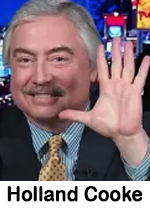 “Most registered voters avoid the news at least some of the time. Of those who disengage, over half avoid national politics coverage,” according to the “Voices of Value 2023 Report” by the Pell Center at Salve Regina University.
“Most registered voters avoid the news at least some of the time. Of those who disengage, over half avoid national politics coverage,” according to the “Voices of Value 2023 Report” by the Pell Center at Salve Regina University.


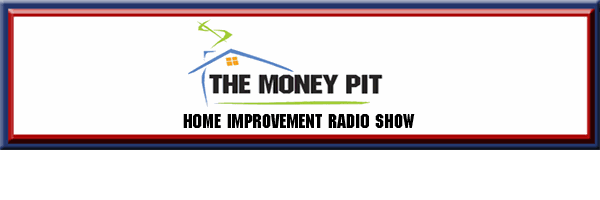
 President, will also become a Region Division president. In addition, Nick Gnau, formerly a Community Division president, will become a Metro Division president, and Shosh Abromovich and Dan Lankford will add Nick’s former Markets to their responsibilities as the Community Division presidents. Amy Leimbach, who served as senior vice president of sales for Austin, Dallas and San Antonio, will become president of those Markets. The company also announces changes that will enable it to increase its focus on a number of high-growth opportunities. Kevin LeGrett, president of the iHeart Sports Network, makes the transition from his role as division president of Los Angeles to now focus exclusively on leading and growing the company’s leading Political and Sports platforms. Additionally, Tony Coles, president of BIN: Black Information Network, now leads all multicultural efforts as the president of multi-cultural business and development. The new division presidents will report directly to Hartley Adkins, president of the iHeartMedia Markets Group, and Coles and LeGrett, as well as Adkins, will report to Rich Bressler, iHeart’s president, COO and CFO and CEO of the iHeartMedia Multi Platform Group. The company will be making this transition over the next few weeks.
President, will also become a Region Division president. In addition, Nick Gnau, formerly a Community Division president, will become a Metro Division president, and Shosh Abromovich and Dan Lankford will add Nick’s former Markets to their responsibilities as the Community Division presidents. Amy Leimbach, who served as senior vice president of sales for Austin, Dallas and San Antonio, will become president of those Markets. The company also announces changes that will enable it to increase its focus on a number of high-growth opportunities. Kevin LeGrett, president of the iHeart Sports Network, makes the transition from his role as division president of Los Angeles to now focus exclusively on leading and growing the company’s leading Political and Sports platforms. Additionally, Tony Coles, president of BIN: Black Information Network, now leads all multicultural efforts as the president of multi-cultural business and development. The new division presidents will report directly to Hartley Adkins, president of the iHeartMedia Markets Group, and Coles and LeGrett, as well as Adkins, will report to Rich Bressler, iHeart’s president, COO and CFO and CEO of the iHeartMedia Multi Platform Group. The company will be making this transition over the next few weeks. Broadcasting executives spend millions building their radio station’s brand in the marketplace. But is it being spent in the right place?
Broadcasting executives spend millions building their radio station’s brand in the marketplace. But is it being spent in the right place?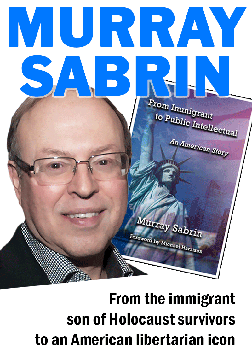 Books, 2022) by Dr. Murray Sabrin. The book has been an Amazon bestseller and a popular vehicle sparking conversations on political news/talk shows across America. Its author, Murray Sabrin, Ph.D. is emeritus professor of finance, Ramapo College of NJ. Dr. Sabrin – a prolific author – is considered a “public intellectual” for writing essays about the economy in scholarly and popular publications as well as being a prolific guest and “go-to” resource on hundreds of radio and TV talk shows and podcasts. According to publisher Michael Harrison, who wrote the book’s provocative foreword, “From Immigrant to Public Intellectual is a truly American story about an immigrant child’s rise from humble beginnings to forge a stellar career as an educator, author, candidate, and media influencer. Murray Sabrin explains libertarianism in plain language using his own life story set against a half-century of changing times. Talk show hosts have been tapping into this articulate scholar’s knowledge and views for more than three decades since his impressive third-party showing as the Libertarian candidate for Governor of New Jersey in 1997.” To learn more about Dr. Murray Sabrin please visit murraysabrin.com and murraysabrin.substack.com.
Books, 2022) by Dr. Murray Sabrin. The book has been an Amazon bestseller and a popular vehicle sparking conversations on political news/talk shows across America. Its author, Murray Sabrin, Ph.D. is emeritus professor of finance, Ramapo College of NJ. Dr. Sabrin – a prolific author – is considered a “public intellectual” for writing essays about the economy in scholarly and popular publications as well as being a prolific guest and “go-to” resource on hundreds of radio and TV talk shows and podcasts. According to publisher Michael Harrison, who wrote the book’s provocative foreword, “From Immigrant to Public Intellectual is a truly American story about an immigrant child’s rise from humble beginnings to forge a stellar career as an educator, author, candidate, and media influencer. Murray Sabrin explains libertarianism in plain language using his own life story set against a half-century of changing times. Talk show hosts have been tapping into this articulate scholar’s knowledge and views for more than three decades since his impressive third-party showing as the Libertarian candidate for Governor of New Jersey in 1997.” To learn more about Dr. Murray Sabrin please visit murraysabrin.com and murraysabrin.substack.com.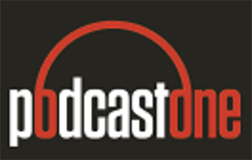 incorporating SourceAudio’s cutting-edge AI technology to access top-tier movie and TV music catalogs of 1.2 million songs, PodcastOne aims to elevate the creative quality of their podcasts, providing audiences with an immersive and iconic audio experience.” PodcastOne co-founder and president Kit Gray states, “This partnership marks a significant leap forward in our commitment to delivering an unparalleled podcasting experience. By leveraging SourceAudio’s AI technology, we are empowering our podcasters to discover audio elements that resonate with the essence of their shows, creating a more engaging and immersive listening experience.”
incorporating SourceAudio’s cutting-edge AI technology to access top-tier movie and TV music catalogs of 1.2 million songs, PodcastOne aims to elevate the creative quality of their podcasts, providing audiences with an immersive and iconic audio experience.” PodcastOne co-founder and president Kit Gray states, “This partnership marks a significant leap forward in our commitment to delivering an unparalleled podcasting experience. By leveraging SourceAudio’s AI technology, we are empowering our podcasters to discover audio elements that resonate with the essence of their shows, creating a more engaging and immersive listening experience.”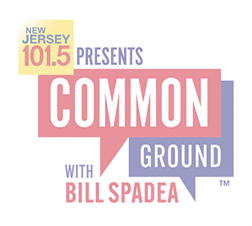 Common Ground with Bill Spadea” and will feature live episodes of the podcast on location from towns, landmarks and businesses across New Jersey. The station says the deal will give Spadea the resources to focus on hard-hitting conversation and longer form interviews with leaders from New Jersey (and beyond). Spadea adds, “This partnership is the next step in the great success of our morning show, which has seen ratings skyrocket in recent years. We’re excited to be bringing multiple remote podcasts to our audience every month and look forward to seeing everyone on the trail!”
Common Ground with Bill Spadea” and will feature live episodes of the podcast on location from towns, landmarks and businesses across New Jersey. The station says the deal will give Spadea the resources to focus on hard-hitting conversation and longer form interviews with leaders from New Jersey (and beyond). Spadea adds, “This partnership is the next step in the great success of our morning show, which has seen ratings skyrocket in recent years. We’re excited to be bringing multiple remote podcasts to our audience every month and look forward to seeing everyone on the trail!”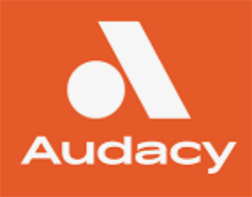 financial struggles and looks more broadly at how radio as a legacy medium is facing “the same headwinds as other traditional media.” Carman adds, “Stations are losing their grip on younger audiences, and advertisers are tuning out. Fresh sources of revenue, like podcasts and streaming audio, are going to new contenders such as Spotify Technology SA or just failing to make up for the lost radio ad dollars.” The U.S. radio business has always touted its reach, but according to Lauren Russo, EVP at ad buyer Horizon Media, broadcast radio faces real problems. “The broadcast marketplace is extremely soft for ’23 and similarly for ’24. The overall audio ecosystem continues to grow from a streaming and podcasting perspective, but at the expense of broadcasts.”
financial struggles and looks more broadly at how radio as a legacy medium is facing “the same headwinds as other traditional media.” Carman adds, “Stations are losing their grip on younger audiences, and advertisers are tuning out. Fresh sources of revenue, like podcasts and streaming audio, are going to new contenders such as Spotify Technology SA or just failing to make up for the lost radio ad dollars.” The U.S. radio business has always touted its reach, but according to Lauren Russo, EVP at ad buyer Horizon Media, broadcast radio faces real problems. “The broadcast marketplace is extremely soft for ’23 and similarly for ’24. The overall audio ecosystem continues to grow from a streaming and podcasting perspective, but at the expense of broadcasts.” 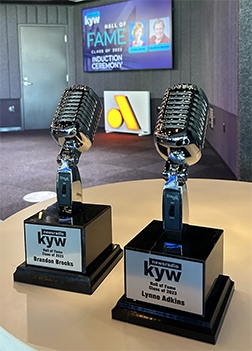 Newsradio staff and join other distinct Hall of Famers, including NBC News’ Andrea Mitchell and longtime suburban bureau chief Jay Lloyd. Lynne Adkins spent 34 years as an anchor, reporter and mentor at KYW Newsradio. Brandon Brooks was the voice of news in Philadelphia for more than 30 years. He first came to KYW Newsradio as a part-time anchor and reporter in 1989. Audacy Philadelphia SVP and market manager David Yadgaroff states, “This honor is long overdue for these two inductees who have devoted over three decades of their lives to being reliable news sources for the Philadelphia region. Not only has their professionalism set a high standard for our content, but their extensive backgrounds have taught the next generation of KYW Newsradio broadcasters to aspire to a new level.”
Newsradio staff and join other distinct Hall of Famers, including NBC News’ Andrea Mitchell and longtime suburban bureau chief Jay Lloyd. Lynne Adkins spent 34 years as an anchor, reporter and mentor at KYW Newsradio. Brandon Brooks was the voice of news in Philadelphia for more than 30 years. He first came to KYW Newsradio as a part-time anchor and reporter in 1989. Audacy Philadelphia SVP and market manager David Yadgaroff states, “This honor is long overdue for these two inductees who have devoted over three decades of their lives to being reliable news sources for the Philadelphia region. Not only has their professionalism set a high standard for our content, but their extensive backgrounds have taught the next generation of KYW Newsradio broadcasters to aspire to a new level.”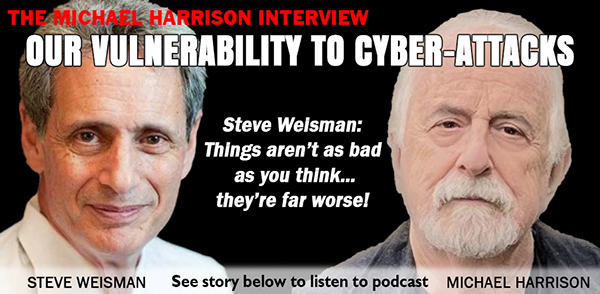
 Folks in the Gen Z and millennial demographics are heavily
Folks in the Gen Z and millennial demographics are heavily  company says, “The numbers don’t lie. America’s military heroes are struggling with money. A recent survey conducted by Wounded Warrior Project finds six in 10 veterans did not have enough money to make ends meet at some point in the past year. The survey also finds the rising cost of goods is the top-rated source of financial strain.” Dave Ramsey comments, “Veterans who’ve selflessly served to protect our freedom deserve to feel freedom for themselves and their families. It’s not just about financial education; it’s about transformation. Winning with money takes sacrifice, perseverance and determination — qualities veterans know all about. We’ll give them the tools, and they’ll get it done.”
company says, “The numbers don’t lie. America’s military heroes are struggling with money. A recent survey conducted by Wounded Warrior Project finds six in 10 veterans did not have enough money to make ends meet at some point in the past year. The survey also finds the rising cost of goods is the top-rated source of financial strain.” Dave Ramsey comments, “Veterans who’ve selflessly served to protect our freedom deserve to feel freedom for themselves and their families. It’s not just about financial education; it’s about transformation. Winning with money takes sacrifice, perseverance and determination — qualities veterans know all about. We’ll give them the tools, and they’ll get it done.” 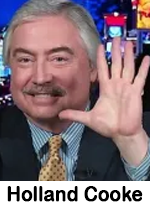 I am always impressed when I see-and-hear radio and TV stations swapping product.
I am always impressed when I see-and-hear radio and TV stations swapping product.
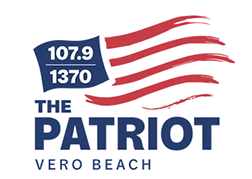 programming includes Premiere Networks’ “The Clay Travis & Buck Sexton Show” and “The Jesse Kelly Show,” as well as programming from Westwood One. iHeartMedia SVP of programming Jason Carr says, “We’re excited to bring ‘The Patriot’ to Vero Beach with local talk and news from ‘The Brian Mudd Show’ and some of the biggest names in national talk radio. ‘The Patriot’ will super-serve the growing Vero Beach community, with the most up-to-date news, weather and sports updates, including sources like FOX News and the Florida News Network.”
programming includes Premiere Networks’ “The Clay Travis & Buck Sexton Show” and “The Jesse Kelly Show,” as well as programming from Westwood One. iHeartMedia SVP of programming Jason Carr says, “We’re excited to bring ‘The Patriot’ to Vero Beach with local talk and news from ‘The Brian Mudd Show’ and some of the biggest names in national talk radio. ‘The Patriot’ will super-serve the growing Vero Beach community, with the most up-to-date news, weather and sports updates, including sources like FOX News and the Florida News Network.” advertising. In 2016 and 2017, direct response represented the vast majority of podcast advertising. From 2018 to 2021, the proportion of podcast ad spend was equally split between brand and direct response.” The post says there are four major implications of the shift to podcast brand advertising: 1) Targeting will become much broader: Wide campaign reach will become the priority with a goal of “being known before you’re needed”; 2) Creative will shift to become more entertaining and emotion based: The objective will be to stir passions and create positive feelings and associations with ads that people find interesting and enjoyable; 3) Brand safety and suitability measurement will become more crucial: Firms like Barometer will become powerful resources to help marketers find the right context for their campaigns with nuanced data; and 4) Measurement will focus on how well campaigns build memories to ensure brands are “easy to mind and easy to find”: Key performance indicators are brand awareness, brand consideration, and brand preference.
advertising. In 2016 and 2017, direct response represented the vast majority of podcast advertising. From 2018 to 2021, the proportion of podcast ad spend was equally split between brand and direct response.” The post says there are four major implications of the shift to podcast brand advertising: 1) Targeting will become much broader: Wide campaign reach will become the priority with a goal of “being known before you’re needed”; 2) Creative will shift to become more entertaining and emotion based: The objective will be to stir passions and create positive feelings and associations with ads that people find interesting and enjoyable; 3) Brand safety and suitability measurement will become more crucial: Firms like Barometer will become powerful resources to help marketers find the right context for their campaigns with nuanced data; and 4) Measurement will focus on how well campaigns build memories to ensure brands are “easy to mind and easy to find”: Key performance indicators are brand awareness, brand consideration, and brand preference. 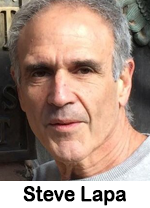 Ready to go back to the future?
Ready to go back to the future?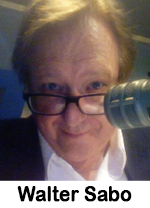 In May 2007, I was enjoying the brand-new app called YouTube. Still independently owned, still relatively unknown. Some of the videos pulled millions of viewers, more viewers than enjoyed by ESPN or any cable network. More interesting, the videos with high counts were not made by NBC or ESPN or any traditional video source. High view count videos were being made by people with no experience in traditional media, they were experimenters producing in their basements and bedrooms.
In May 2007, I was enjoying the brand-new app called YouTube. Still independently owned, still relatively unknown. Some of the videos pulled millions of viewers, more viewers than enjoyed by ESPN or any cable network. More interesting, the videos with high counts were not made by NBC or ESPN or any traditional video source. High view count videos were being made by people with no experience in traditional media, they were experimenters producing in their basements and bedrooms.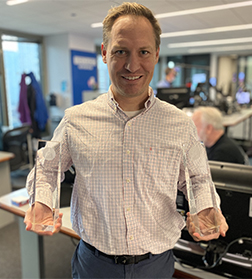 shooting”; Best Hard News Story – “The latest from Highland Park following the Fourth of July parade shooting” for news director Ryan Burrow (pictured holding two of the awards) and talk host John Williams; Best Radio Personality – John Williams; Best Radio Series or Documentary – “Ukraine-Russia War: Russia launches an attack on Lviv” (11/15/2022) for Bob Sirott, Joseph Lindsley, Joe Romano, Hayley Boyd; and Best Sportscaster – Dave Eanet. WGN Radio VP and general manager Mary Sandberg Boyle says, “These awards from the IBA serve as a compelling testament to our station’s ability to provide vital information to our local community during critical times. The collaboration between Channel 9, NewsNation, and our own newsroom proves the strength of our combined resources, ensuring that we remain a trusted source of news for Chicagoland.”
shooting”; Best Hard News Story – “The latest from Highland Park following the Fourth of July parade shooting” for news director Ryan Burrow (pictured holding two of the awards) and talk host John Williams; Best Radio Personality – John Williams; Best Radio Series or Documentary – “Ukraine-Russia War: Russia launches an attack on Lviv” (11/15/2022) for Bob Sirott, Joseph Lindsley, Joe Romano, Hayley Boyd; and Best Sportscaster – Dave Eanet. WGN Radio VP and general manager Mary Sandberg Boyle says, “These awards from the IBA serve as a compelling testament to our station’s ability to provide vital information to our local community during critical times. The collaboration between Channel 9, NewsNation, and our own newsroom proves the strength of our combined resources, ensuring that we remain a trusted source of news for Chicagoland.”